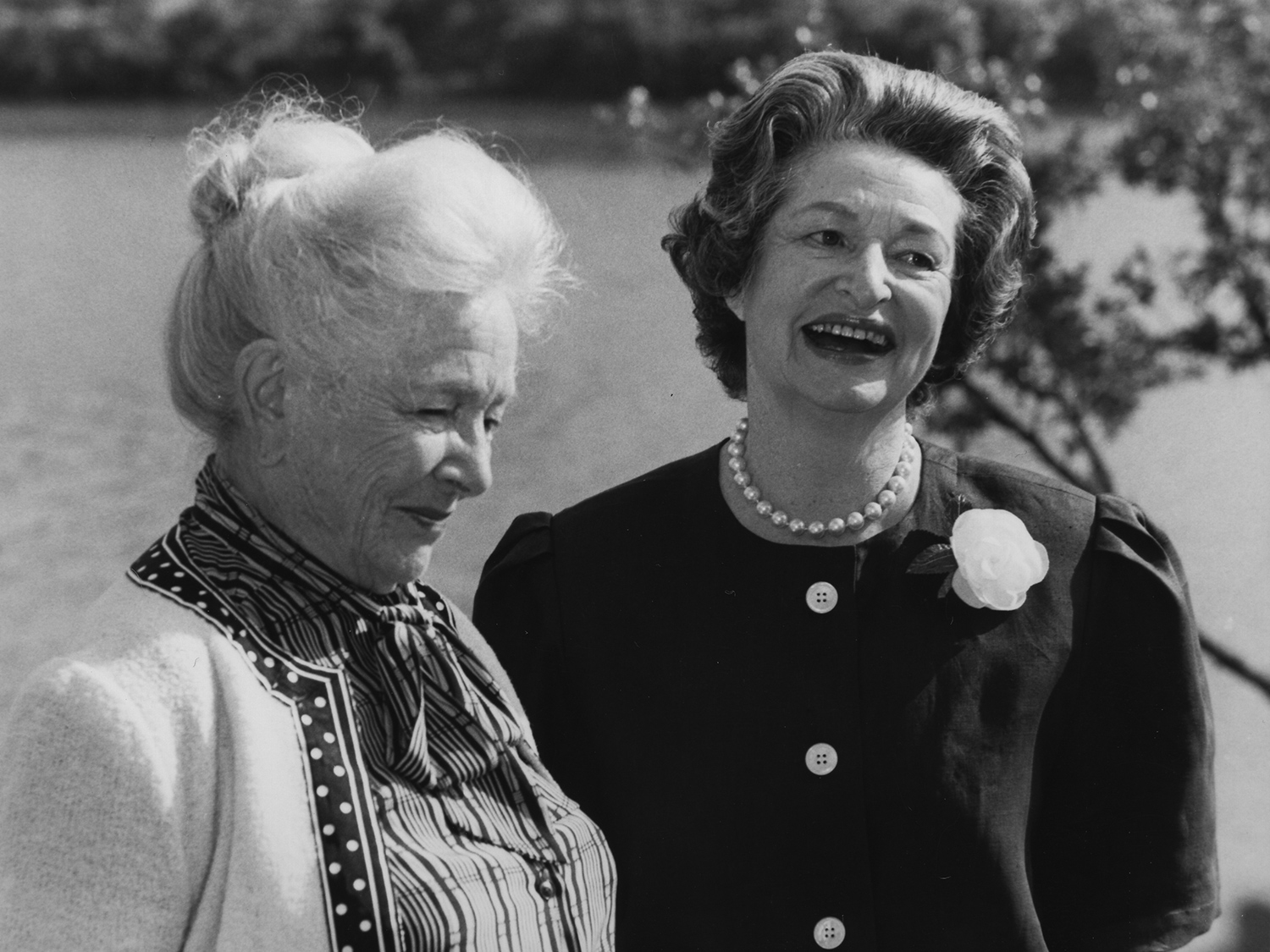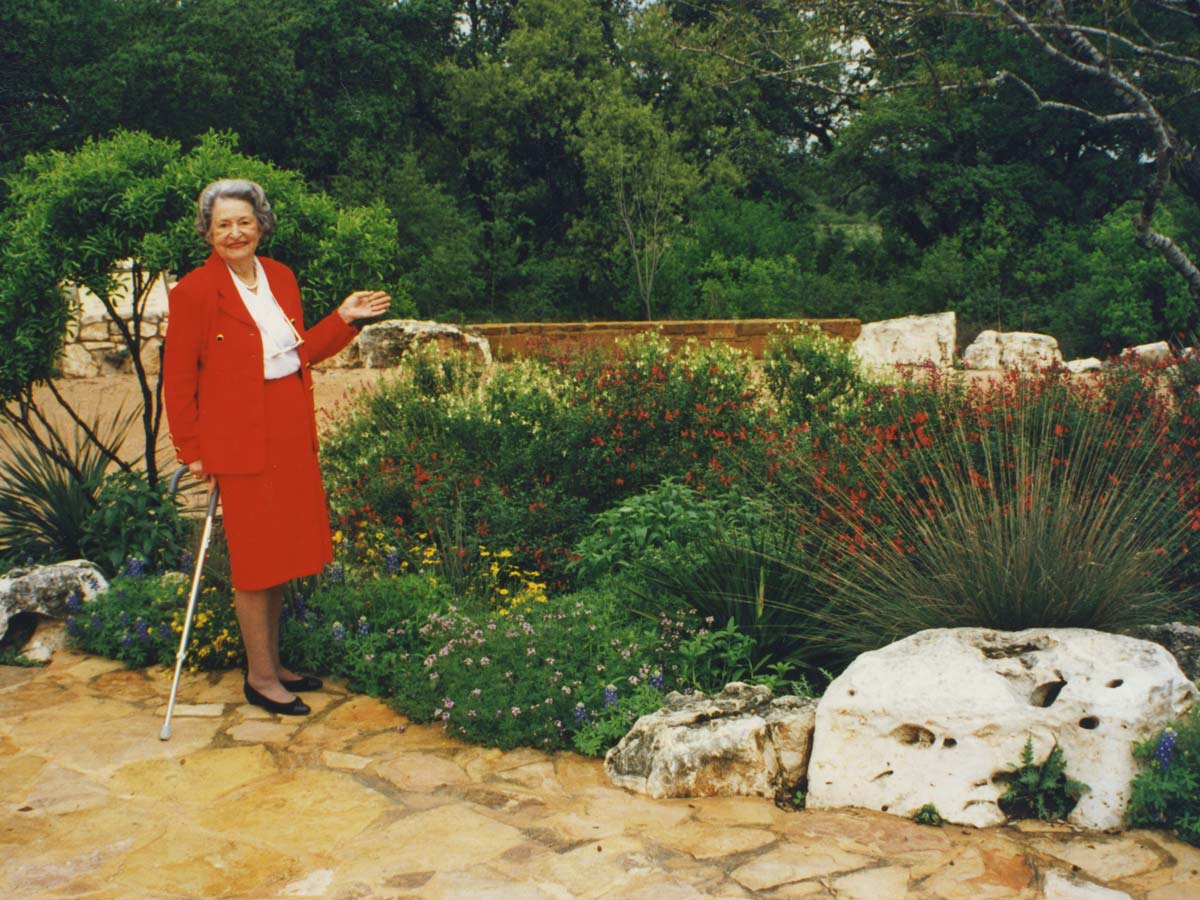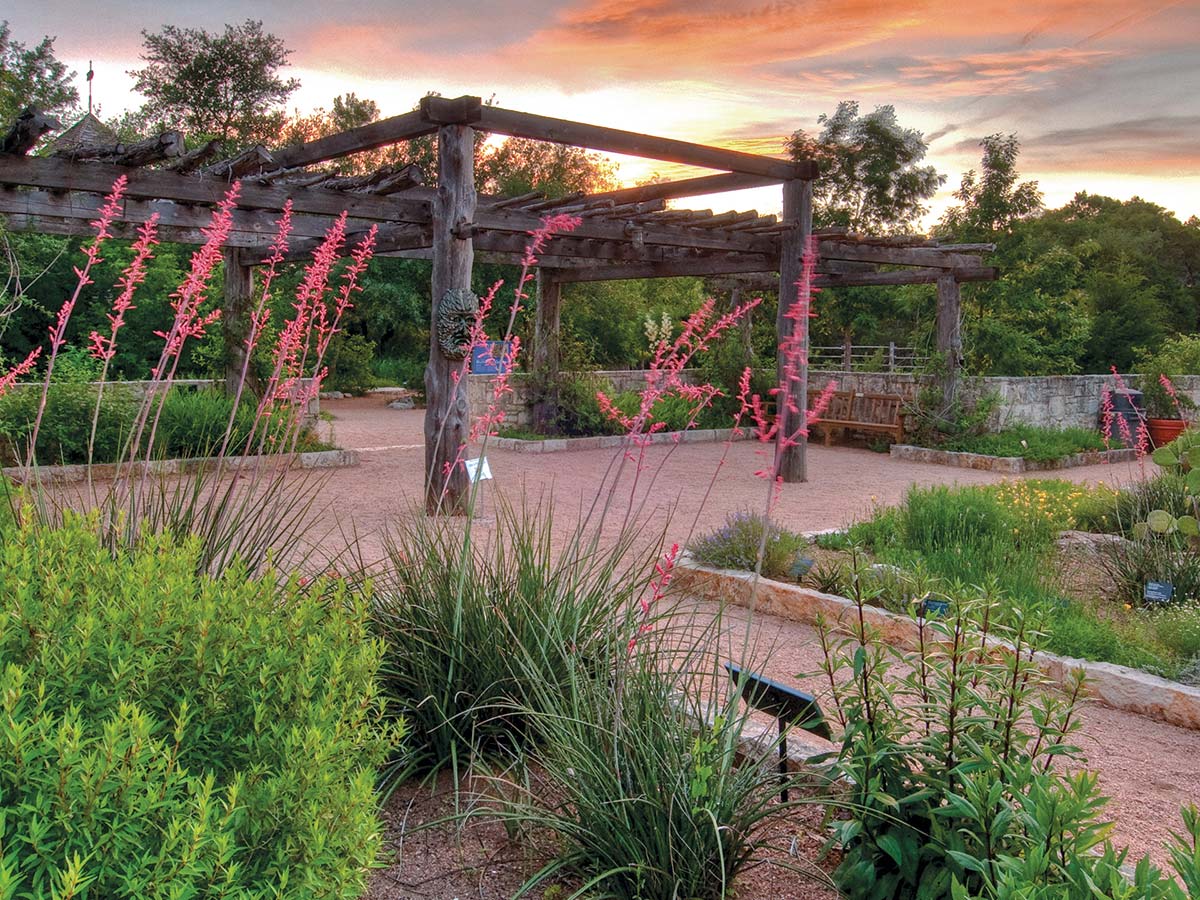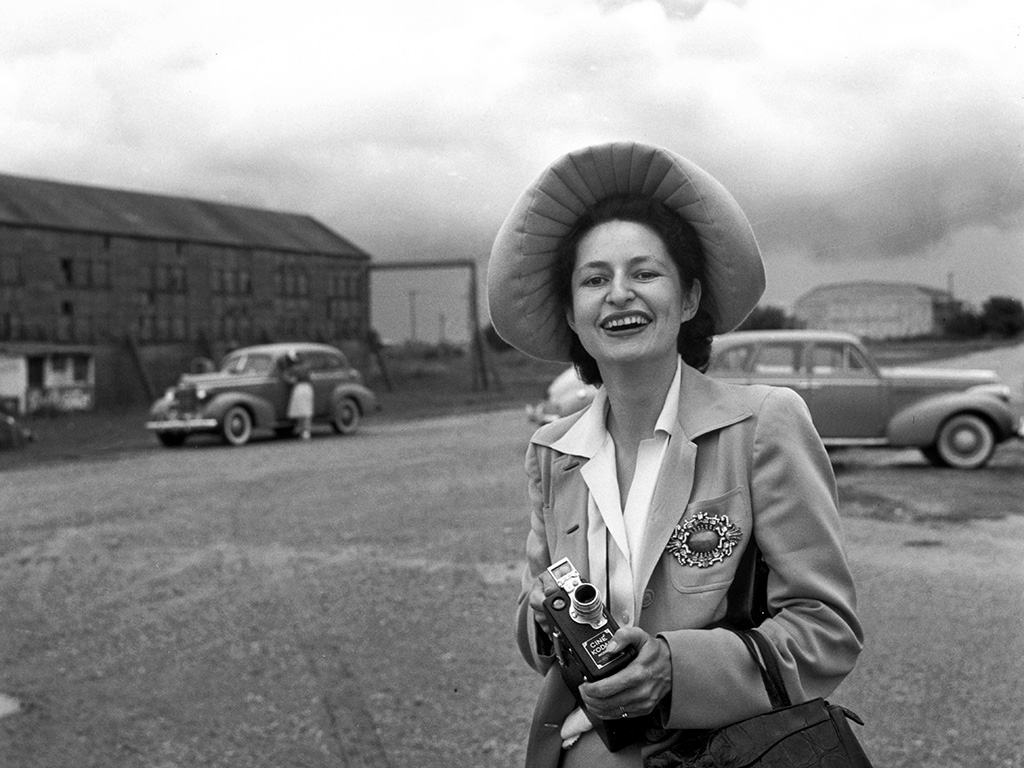OUR STORY
Lady Bird Johnson, former first lady of the United States, was ahead of her time in understanding the reparative and regenerative qualities of native plants and beautiful landscapes.
“Beautification is far more than a matter of cosmetics,” she said in 1968. “For me, it describes the whole effort to bring the natural world and the man-made world into harmony; to bring order, usefulness — delight — to our whole environment, and that of course only begins with trees and flowers and landscaping.”
In 1982, Mrs. Johnson wrote that she was full of excitement about finally “daring to try to establish a National Wildflower Research Center.” In that year, she and actress Helen Hayes decided to do just that, creating a center in East Austin focused on native wildflowers intended to help preserve and restore that beauty and the biological richness of North America.

Helen Hayes and Lady Bird Johnson at a press conference announcing the creation of the Wildflower Center on May 5, 1982.
Public demand to view native gardens and learn more about native plants soon overwhelmed the original 60-acre site in East Austin, and led the Center’s Board of Directors to build a larger campus to accommodate public interest.
The current campus, renamed the Lady Bird Johnson Wildflower Center in 1997, opened in 1995 on a 42-acre site in Southwest Austin, nine miles from downtown. Five acres of native plant gardens and landscapes, designed by J. Robert Anderson, FASLA (principal), Eleanor McKinney (EMLA) and Darrel Morrison (FASLA), were installed throughout a complex of award-winning buildings designed by Overland Partners to reflect the land and regional architecture of the Texas Hill Country.
By 2002, in response to rapidly encroaching land development, the Center had acquired an additional 237 acres of adjacent land through purchase and donation. This expansion of the campus made possible the development of larger scale research on the ecology of the Central Texas region and how best to restore healthy landscapes in the region. It also established education and public outreach as core functions of the Center.
In 2006, the Wildflower Center, then a 501(c)(3) nonprofit organization, was transferred to The University of Texas at Austin. It now operates as a 170(c)(1) nonprofit.
Throughout its history, the Center has become one of the country’s most credible research institutions and effective advocates for native plants.
Major Milestones
1982
Founders Lady Bird Johnson and actress Helen Hayes establish the National Wildflower Research Center. The Wildflower Center’s formal charter was signed on October 21, 1982. A small house and sixty acres of undeveloped land in East Austin became its first home on Mrs. Johnson’s 70th birthday, December 22, 1982.

Lynda Johnson Robb, Luci Baines Johnson and Lady Bird Johnson at the dedication ceremony for the Wildflower Center on December 22, 1982. PHOTO Frank Wolfe
1995
The Center celebrates the grand opening of its new site at La Crosse Avenue, which was initially 42 acres (it is now 284 acres). The design was a model of “total resource conservation” and emphasizes the importance of native landscapes. It received a number of environmental and architectural awards and was featured on the cover of Architecture magazine.
1997
The National Wildflower Research Center is officially renamed the Lady Bird Johnson Wildflower Center.

Lady Bird Johnson at the Wildflower Center in May 1995.
1999
The Wildflower Center acquires an additional 137 acres, making possible the development of its Landscape Restoration Program. The program researches how to best manage and design native landscapes.
2001
The Wildflower Center launches its Plant Conservation Program and becomes a participating institution in the Center for Plant Conservation, a national coalition dedicated to conserving and restoring the rare native plants of the United States.
2002
An agreement between the City of Austin, Stratus Properties (a local developer) and the Wildflower Center culminates in the donation of 105 acres of adjacent land, bringing the Wildflower Center’s total acreage to its current 284.
2003
The Native Plant Information Network is launched, offering information on North American plants online.
2006
The Wildflower Center joins The University of Texas at Austin.
2012
The 16-acre Mollie Steves Zachry Texas Arboretum opens and work begins to plant collections of Texas native trees, including the Hall of Texas Heroes, a collection of famous oak trees of Texas.
2014
The 4.5-acre Luci and Ian Family Garden opens, bringing nature play opportunities to families in the Center’s first certified sustainable garden.

Luci Baines Johnson and Ian Turpin at the entrance to the Family Garden. PHOTO Brian Birzer
2015
The Center-led effort known as the Sustainable Sites Initiative (SITES®) — a collaboration with the U.S. Botanic Garden and the American Society of Landscape Architects — is sold to Green Business Certification Inc. SITES is the world’s premier sustainable landscape rating system.
2017
The Center received the honorary designation by the Texas Legislature as the State Botanic Garden and Arboretum, recognizing the organization’s importance in protecting the state’s cultural and natural heritage.
2018
The Center launches Fortlandia, a temporary exhibition of custom forts designed by local architects, designers and artists and built in the Mollie Steves Zachry Texas Arboretum. It is very well received and significantly increases guest attendance during the fall and winter. It returns for three more years with a new batch of forts each time.
2020
The Wildflower Center responds to increasing concerns about the growing coronavirus pandemic by closing its gates to the public on March 14. All staff are asked to work remotely with the exception of those horticulture and facilities staff deemed essential to maintain operations and gardens. All public and private events and classes are canceled until April 24. The Center reopens to members on May 9 and to all (members and non-members) on May 18.
2021
The Center closes early on Feb. 12 and remains closed through Feb. 22 due to a historic winter storm.
On Sept. 1, the Center transitions from the School of Architecture to the College of Natural Sciences at The University of Texas at Austin and receives official designation as a field research station.
Current Facts
The Wildflower Center by the numbers
Meet Mrs. J
Explore a website dedicated to Lady Bird Johnson
Program Overview
Learn more about the Center's programs



